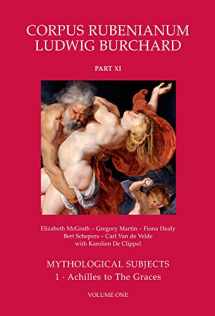
Mythological Subjects, A-G (Corpus Rubenianum Ludwig Burchard)
ISBN-13:
9780905203676
ISBN-10:
0905203674
Author:
Karolien De Clippel, Elizabeth McGrath, Bert Schepers, Carl Van de Velde, Fiona Healy
Publication date:
2016
Publisher:
Brepols Publishers
Format:
Hardcover
944 pages
FREE US shipping
Book details
ISBN-13:
9780905203676
ISBN-10:
0905203674
Author:
Karolien De Clippel, Elizabeth McGrath, Bert Schepers, Carl Van de Velde, Fiona Healy
Publication date:
2016
Publisher:
Brepols Publishers
Format:
Hardcover
944 pages
Summary
Mythological Subjects, A-G (Corpus Rubenianum Ludwig Burchard) (ISBN-13: 9780905203676 and ISBN-10: 0905203674), written by authors
Karolien De Clippel, Elizabeth McGrath, Bert Schepers, Carl Van de Velde, Fiona Healy, was published by Brepols Publishers in 2016.
With an overall rating of 3.9 stars, it's a notable title among other
books. You can easily purchase or rent Mythological Subjects, A-G (Corpus Rubenianum Ludwig Burchard) (Hardcover) from BooksRun,
along with many other new and used
books
and textbooks.
And, if you're looking to sell your copy, our current buyback offer is $0.3.
Description
One remarkable feature of European culture as it developed in the Renaissance was the accommodation it made with ancient paganism. The classical gods and their legends were allegorised, transformed into symbolic figures or emblematic scenes that might accord with Christian morality. At the same time a secular space was created in art for the depiction of the most popular myths, above all the love stories recounted by the ancient poets. These stories were not only attractive in themselves; they offered the opportunity to depict nude figures in narrative action, which the example of antiquity held forth as the highest goal for painting. Rubens was one of the greatest creators of classical allegory; he was also a supreme interpreter of the classical stories. No painter was so at home in the literature of the Greeks and Romans. When he painted for pleasure, which, increasingly in the course of his life, he felt able to do, he used pagan myth to express and celebrate themes of love, beauty and the creative forces of nature, often in wonderfully idiosyncratic ways. At the same time, as a Christian committed to the ideals of the Catholic Reformation, Rubens respected the restrictions generally placed on the depiction of pagan tales. Most of his mythological paintings were made for private settings, for display within houses (including his own) or in the galleries of princes, noblemen and prelates. It is happy accident of history that these splendid paintings are now widely visible in the great museums of the world.


We would LOVE it if you could help us and other readers by reviewing the book
Book review

Congratulations! We have received your book review.
{user}
{createdAt}
by {truncated_author}


